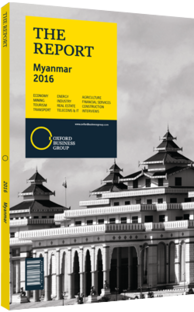Myanmar telecoms and IT sector balances affordability and sustainability
The expansion of Myanmar’s ICT sector is one of the brightest spots in an economy that has undergone rapid transformation in recent years. The increasing demand for data has caught operators off guard. Norway’s Telenor initially launched a combination 2G and 3G network in the anticipation that a good percentage of users would not have 3G capable phones. However, with a growing number of affordable smart phones entering the market and reasonably priced SIM cards – which were once priced as high as $3000 but can now be bought at thousands of locations for less than $1.50 – mobile penetration and data usage are rapidly on the rise. As a result, Telenor has followed in the footsteps of its Qatari competitor Ooredoo, and announced that future network infrastructure will be 3G, which will likely be followed by 4G once spectrum allocation is eased.
The ICT sector is an appealing prospect to investors. With 91 international firms competing for the first two operating licenses in 2013, and a host of multinational corporations in network development and management, it is clear that investor appetite is growing. However, experts believe that the price for data is hovering at a boiling point as operators try to squeeze out the competition. While customers have greatly benefitted from the falling price of voice, data and SMS services, the industry itself is trying to balance affordability with sustainability.
Data
Tariff innovation is the tool of choice for operators in the highly price-sensitive Myanmar market. In May 2015, Ooredoo introduced its “Phalan Phalan” internet promotion that reduced data charges from MMK10 ($0.008) to MMK6 ($0.005) per MB. This move was quickly countered by its Norwegian competitor less than 10 hours later, with Telenor announcing that it was reducing the price of a MB down to MMK5 ($0.004) from MMK6 ($0.005), maintaining its position as the data price leader with its “My Internet” promotion. MecTel, which is owned by the military, is on par with Ooredoo at least as far a data charges are concerned, at MMK6 ($0.005) per MB with its “Shwe Myinttar” plan. In October 2015 Myanmar Post and Telecommunications also reduced the cost of its “Swe Thahar” package to MMK6 ($0.005) per MB from MMK7.5 ($0.006), making the average cost of a MB approximately 40% lower than neighbouring Thailand – priced at MMK10.10 ($0.008) – where operation costs are much lower. On the other hand, average data prices in Cambodia are 360% higher than in Myanmar, at MMK21.63 ($0.016) In 2013 Myanmar’s average revenue per user (ARPU) was at an impressive $9, while mobile penetration was a less impressive 10%. The high ARPU was the result of limited SIM cards in the hands of a few wealthy customers. ARPU for operators in 2015 is in the $5 to $7 range, with Ooredoo customers at the higher end of the scale due to their 3G-only network. These averages are expected to progressively fall more into line with regional averages as more individuals in rural communities get connected. Indonesia and Vietnam were in the $3 range in 2015.
Sustainability
Finding a balance between quality and affordable services is a priority. With higher than normal operating costs and a depreciating local currency, operators have been pressed throughout 2015 to cut costs. This will become more difficult during the next stage of tower construction. However, with tower sharing initiatives set to increase, some costs will be greatly reduced. It is not yet clear how much that will translate into a reduction of costs for the end user. The expected entry of another operator could trigger a new round of price cuts. However, analysts believe that the intense price competition amongst Myanmar’s mobile operators is likely to slow in 2016, even while it will remain a key factor in attracting new customers. Under the current profit-cost structure, if prices were to fall much further, service levels could possibly be jeopardised.
You have reached the limit of premium articles you can view for free.
Choose from the options below to purchase print or digital editions of our Reports. You can also purchase a website subscription giving you unlimited access to all of our Reports online for 12 months.
If you have already purchased this Report or have a website subscription, please login to continue.

